Some people believe ladybugs, or more accurately Lady Beetles, bring good luck. And with good reason. These little insects munch all the pests that eat your plants and spoil your beautiful garden.
That said, many farmers use ladybugs to naturally control pests. Here are 13 things these critters love to eat and 5 they don’t.
Table of Contents
13 Things Ladybugs Love to Eat
1. Aphids
Aphids, also called Blackfly or Greenfly, are small bugs that eat plant sap. They are one of the worst pests as they reproduce rapidly. Aphids can even create live young without mating.
The good news is that aphids are a ladybug’s favorite meal. A full-grown Lady Beetle will eat up to 50 aphids a day. In the larvae stage, they will eat half that. The University of Kentucky found that ladybugs eat almost 5,000 aphids in their entire one-year lifetime.
2. Fruit Flies
Fruit flies can be a real pest if left to breed. Females can lay about 500 eggs at a time. Fruit flies love fermenting fruits and vegetables.
Fruit flies don’t live for long but can start breeding from as early as the second day of their adult life. That’s where ladybugs come in handy. They love eating fruit flies and their eggs.
You can rest easy with a few ladybugs keeping your garden pest-free.
3. Mealybugs
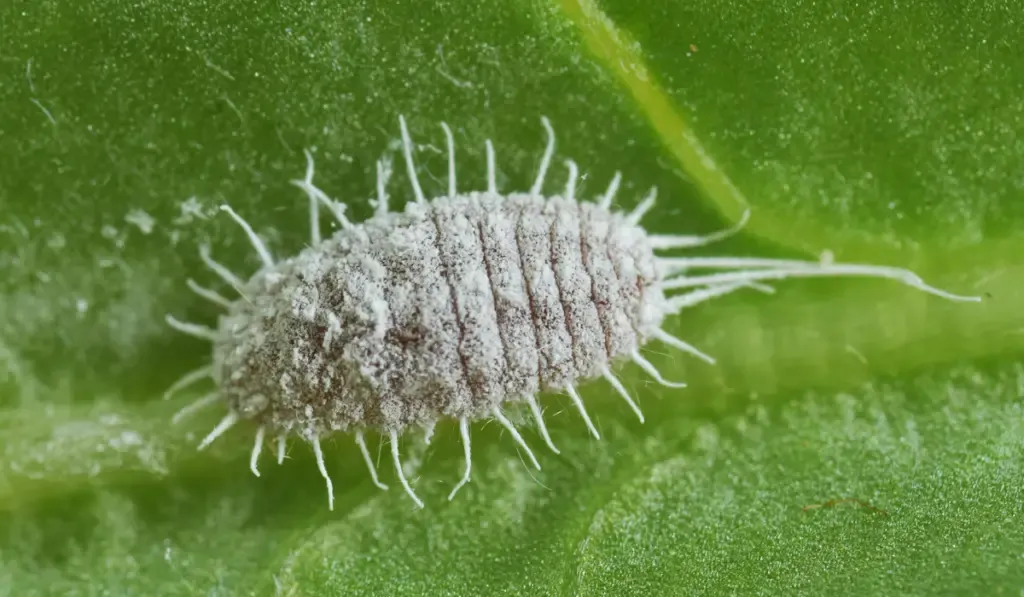
Mealybugs look like tiny aliens. They have a scale-like exterior and long spindly legs. Mealybugs will eat the delicious nectar and sap of indoor and outdoor plants.
Much like mosquitoes, Mealybugs transmit various diseases to your plants as they eat and travel. Ladybugs love eating these pests, so they can help you reduce the risk of an infestation.
4. Spider Mites
Spider Mites aren’t insects per se. They are tiny, colorful critters. Much like a spider, they have two central body parts and eight legs.
Spider Mites will eat almost any plant that comes along their way, but they prefer to live in deciduous and evergreen trees. Ladybugs love spider mites. They will eat as many as nine mites per hour, which is around 100 per day.
5. Spiders
Believe it or not, ladybugs love eating small spiders. They will also munch on their eggs and hatchlings.
Small spiders have soft bodies, making them easy targets for the voracious Ladybug. They are opportunistic eaters, so will consume any spider they come across. Surprisingly, spiders won’t eat ladybugs as the red or orange colors deter them.
6. Thrips
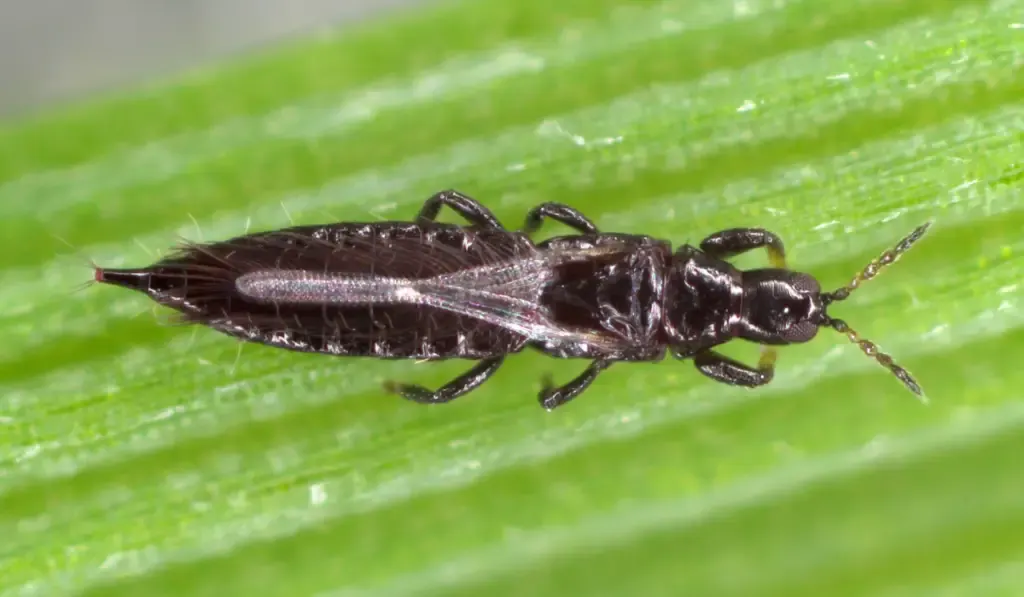
Thrips usually occur in a garden when a new plant you bring in has a hidden infestation. They are tiny insects that sometimes have wings. Like aphids, they use their mandibles to draw the sap out of your vegetation.
Thrips are one of the worst pests as they will bite you as they struggle to find moisture in the plants they like to eat. Ladybugs are fantastic for controlling thrips and preventing an infestation.
7. Whiteflies
Whiteflies share a close relation to Aphids and Mealybugs. You might think they are flies because of their name, but they aren’t.
Whiteflies live in clusters and are diurnal, making them easy to see. They love vegetables but will also eat other vegetation in your backyard. Ladybugs love eating whiteflies, helping you keep your garden free of pests.
8. Flower Nectar
Like bees, ladybugs are wonderful pollinators. The pollen sticks to their bodies and mixes with other flowers as they roam around. This helps the plants to produce seeds.
Ladybugs eat nectar in return for this humble task. One of the best ways to bring ladybugs to your garden is by planting flowers like Angelica or Marigold.
9. Fungus
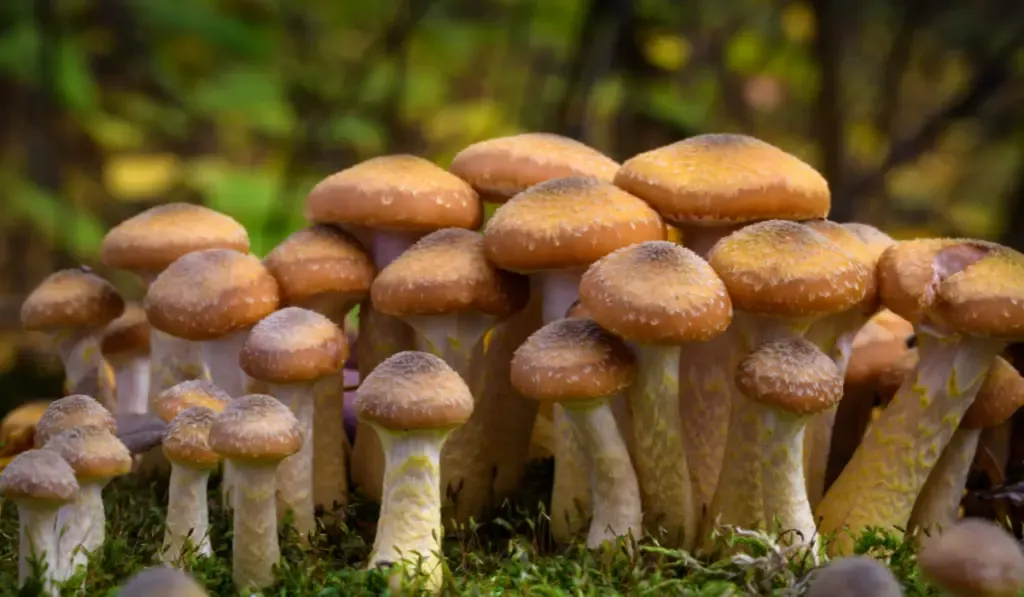
Some ladybugs, like the Illeis Leptothea, prefer eating fungus. They are yellow with black spots. They commonly feed on dust-like mildew and mushrooms.
While they won’t help you with pest control, they also won’t eat your other plants. Unless you’re growing mushrooms, of course.
10. Leaves
The Epilachninae ladybug, or Mexican Bean Beetle, is a pest to most horticulturalists. They will munch on your precious plants instead of the nasty critters you don’t want in your garden.
To spot the Epilachninae ladybug, look out for an oval-shaped, orange body with black spots. Use natural methods to get rid of them if you find a bloom of these ladybugs in your backyard.
11. Sweet Fruits with Low Acidity
A fantastic way to attract ladybugs to your garden is to use fruit. They don’t like acidic fruits but will happily eat watermelon, melons, cantaloupe, and honeydew.
If you keep ladybugs as pets or at least foster them in your garden for pest control, you can feed them fruits when there is a scarcity of aphids and other insects.
12. Soft Raisins
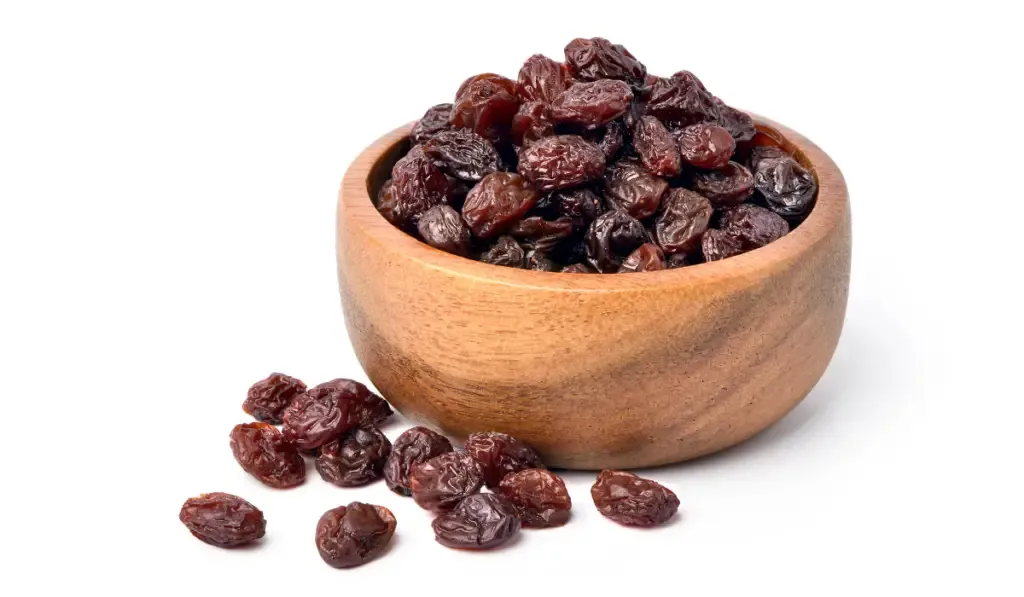
Another snack ladybugs love to munch down on is soft raisins. In fact, you want the raisins to be moist as it helps to hydrate these cute insects.
If you keep ladybugs as pets, then feeding them sweet, soft raisins every so often will make them extra happy.
13. Jelly
Another trick to keep your pet ladybugs hydrated is to feed them a little jelly as a special treat. Ladybugs need water but sometimes drown in captivity. Feeding them jelly, and raisins can reduce this risk.
Avoid feeding them jelly every day as it is artificial. Rather give them fruit or raisins as a regular treat.
5 Things Ladybugs Don’t Eat
While ladybugs eat almost all soft-bodied insects, and a few of them eat plants, there are some things they don’t eat. Here are five things ladybugs don’t eat.
1. Ants
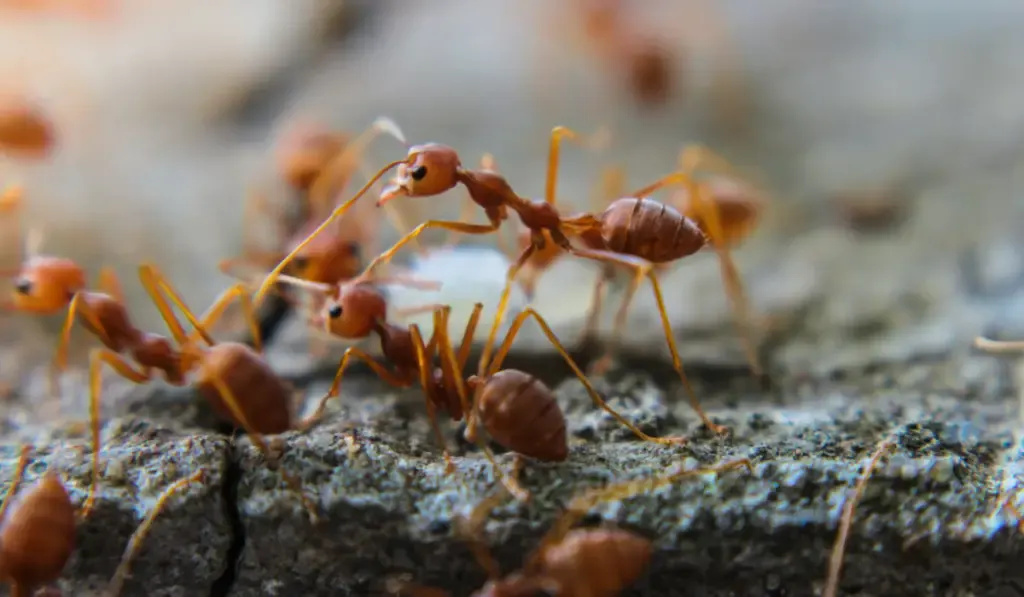
Ladybugs and ants aren’t friends but usually don’t bother each other. That said, ants sometimes eat ladybugs depending on the species and food availability.
Ladybugs may become defensive when an ant approaches. Ants also love eating aphids, so a turf war sometimes develops. Even so, ladybugs won’t eat ants.
A lone ant won’t frazzle the ladybug too much, but a few of them might. In that case, ladybugs fly away to safety instead of attacking or eating the ants.
2. Dragonflies
Dragonflies evolved 300 million years ago, making them one of the first winged insects to ever exist. And what might the modern dragonfly’s most favorite snack be? You guessed it, the ladybug.
Ladybugs don’t eat dragonflies because they will get eaten first. Aside from the threat, they also don’t like the hard body of a dragonfly and are way too small to make them a meal.
3. Assassin Bugs
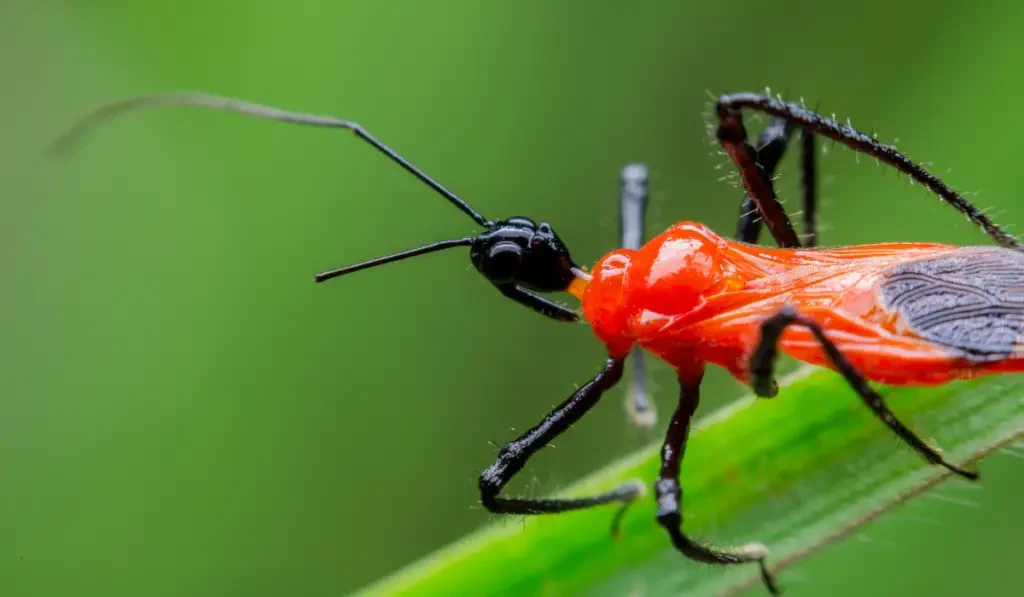
Like ladybugs, Assassin Bugs eat up most of the pests in your backyard. However, they will also gobble up all your ladybugs. You can find more than 3,000 species of Assassin Bugs around the world.
Unfortunately, these helpful critters can’t cohabitate with ladybugs. They give the so-called “kiss of death” to their prey. This is why some people call them Kissing Bugs. Ladybugs won’t be spared.
4. Lavender
Lavender is one of the best herbs to have in your garden. It attracts bees and has many other benefits. You can use it to make beautiful essential oils or in your cooking.
We all love lavender, but ladybugs won’t eat it even if it was the last thing on earth. In fact, if you find yourself with an Epilachninae ladybug infestation, you can plant lavender to deter them naturally.
5. Chrysanthemums
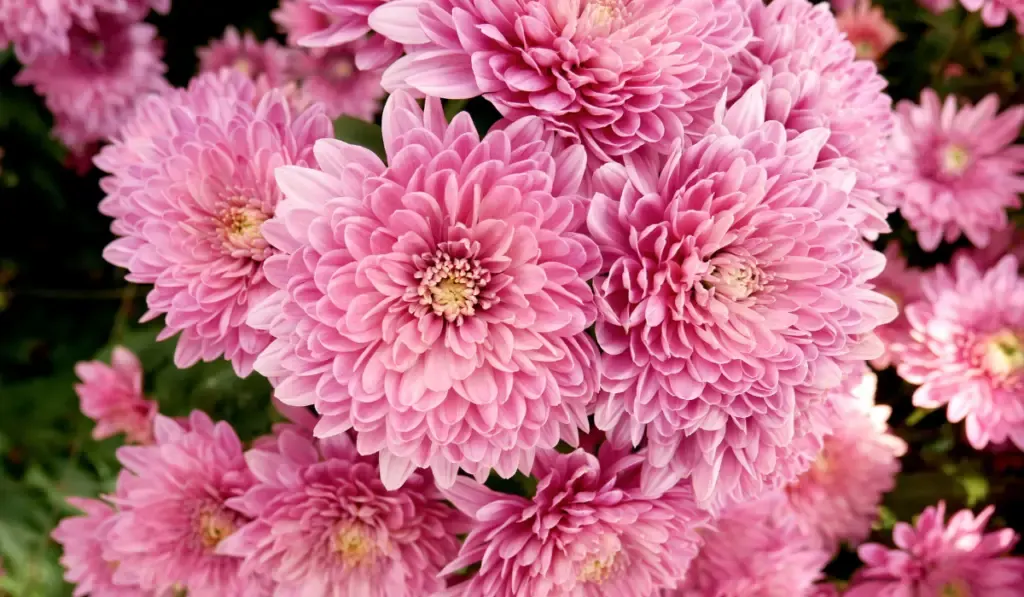
Chrysanthemums are beautiful fall flowers. When they are in full bloom, it makes your heart smile at the exquisite arrangement of the petals as well as the colors.
Ladybugs don’t feel quite the same way. They don’t like to eat or even be near Chrysanthemums. Plant them if you want to keep pest ladybugs away or want to add a touch of beauty to your garden’s landscape.
Final Thoughts
Ladybugs love eating aphids the most of all the foods on this list. They are opportunistic eaters so will happily munch on any small, soft-bodied bug that crosses their path. Some ladybug species like to eat fungi, while others are pests and will munch on your plants.
If you keep a ladybug as a pet, you can feed it soft, moist raisins, non-acidic fruits like watermelons or honeydew, and jelly. It’s best to feed them jelly every once in a while because too much artificial food is bad for them.
Ladybugs won’t eat large, hard-bodied insects or arachnids. They also hate lavender and chrysanthemums. And that’s the ladybug’s diet.
Research
- https://www.planetnatural.com/ladybugs-pest-control/
- https://ladybugplanet.com/what-do-ladybugs-eat-in-the-wild-or-in-homes-a-helpful-guide/
- https://www.ladybug-life-cycle.com/what-ladybugs-eat.html
- https://www.mayexterminating.com/9-surprising-facts-about-ladybugs/
- https://schoolofbugs.com/do-ladybugs-eat-spiders/
- https://www.planetnatural.com/aphids-ladybugs/
- https://animals.sandiegozoo.org/animals/ladybug
- https://www.royalqueenseeds.com/blog-cannabis-101-ladybugs-as-a-natural-solution-to-spider-mites-n315
- https://www.almanac.com/pest/whiteflies
- https://medium.com/@Onlinepestcontrolhornby/what-are-mealybugs-and-how-to-get-rid-of-them-87f9bcd19a70
- https://homeguides.sfgate.com/ladybugs-eat-nectar-flowers-73026.html
- https://feedingnature.com/what-do-ladybugs-eat/
- https://www.orkin.com/other/thrips
- https://ladybugplanet.com/do-ladybugs-eat-ants-when-ants-and-ladybugs-clash/
- https://www.bobvila.com/articles/assassin-bugs/
- https://www.thoughtco.com/fascinating-facts-about-ladybugs
- https://www.gardendesign.com/flowers/mums.html
